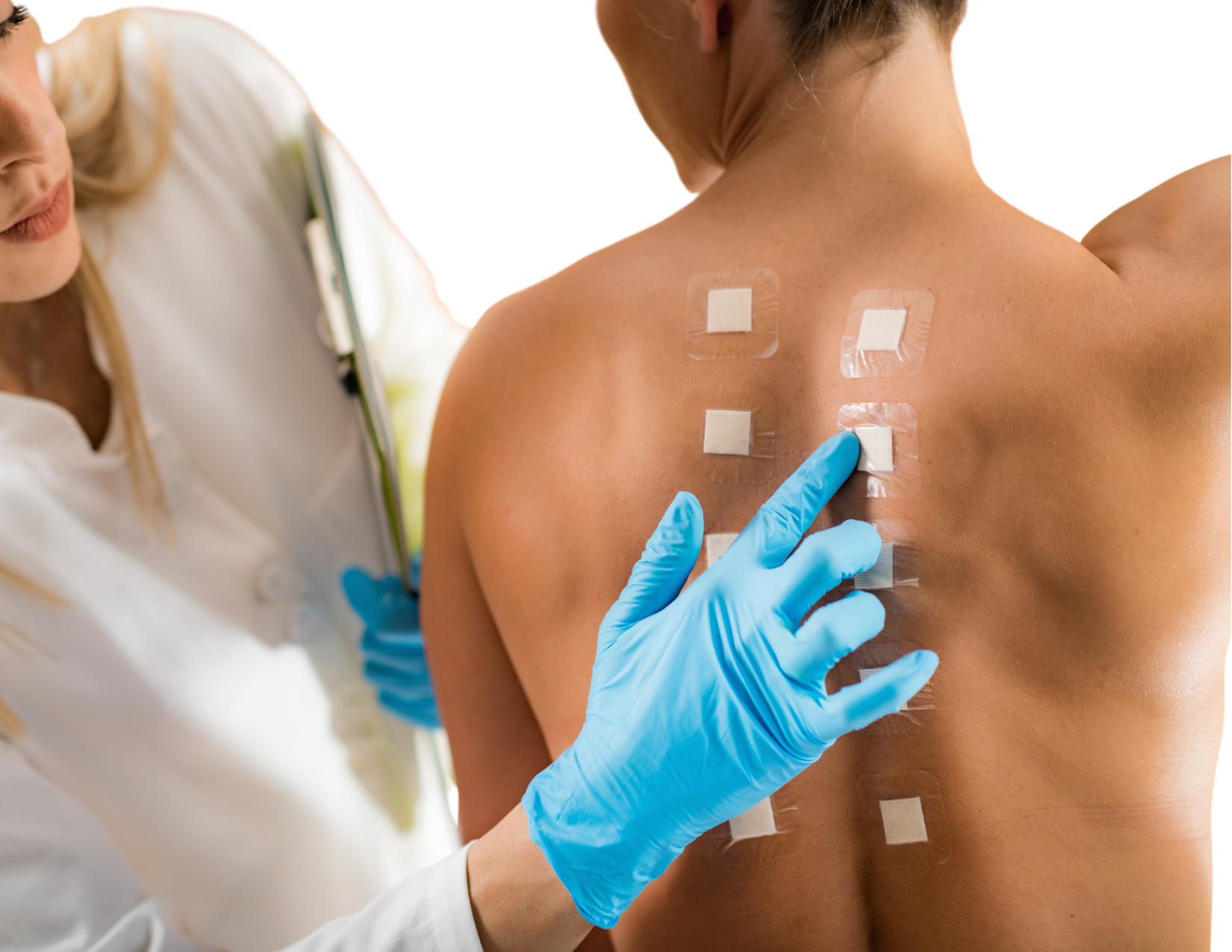ALLERGY PATCH TESTING
Home > Procedures > Cluster Desensitization
Unlock the Mystery of Allergies
Discover Answers with Allergy Patch Testing!
During a skin patch test, an allergist places a small amount of an allergenic substance on your skin, typically on your back or arm, and leaves it there for a certain period. This procedure potentially causes a reaction. The main goal of allergy testing with back patches is to determine whether you have any allergies or sensitivities to specific substances.
It's worth noting that the allergy patch test identifies delayed-type hypersensitivity reactions that occur when allergens make direct contact with the skin. However, it's essential to understand that this diagnostic procedure does not predict or diagnose allergies related to inhaled substances or severe anaphylactic reactions caused by foods, insect stings, or other systemic triggers.

Patch Testing: Essential Pre-Appointment Information
If you have been experiencing a persistent rash or skin irritation, your doctor may advise you to undergo a skin patch test to identify potential allergens causing the reaction. Skin patch testing is a valuable diagnostic tool that helps identify allergies that manifest as delayed skin reactions.
It is essential to be well-prepared and informed before undergoing patch skin testing for allergies. This guide provides valuable insights into the procedure and its purpose and highlights the significance of having adequate knowledge.
By preparing adequately, understanding the procedure, and communicating effectively with your healthcare provider, you can maximize the benefits of patch testing and gain valuable insights into
managing your allergies more effectively. Take control of your health and get the answers you need with skin patch testing.
PLEASE NOTE: YOU MUST AVOID ORAL STEROIDS FOR 4 WEEKS Before PATCH TEST

